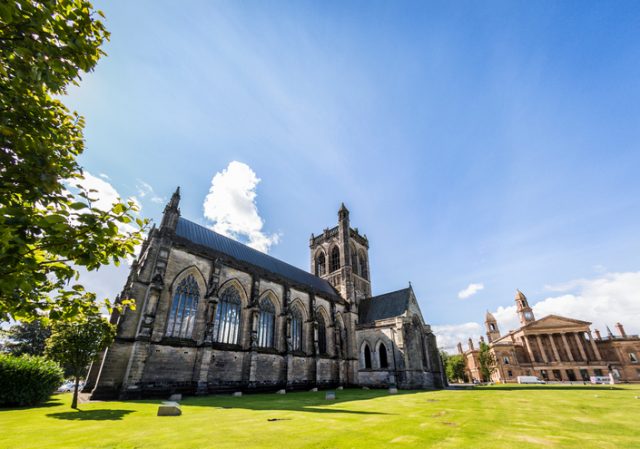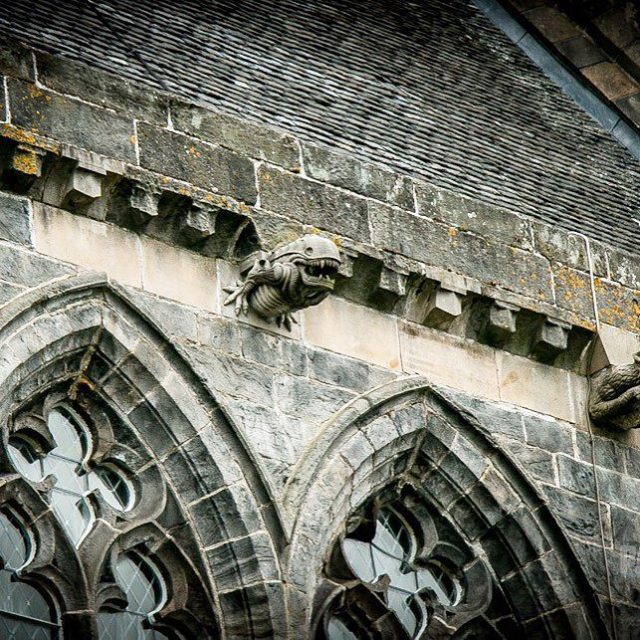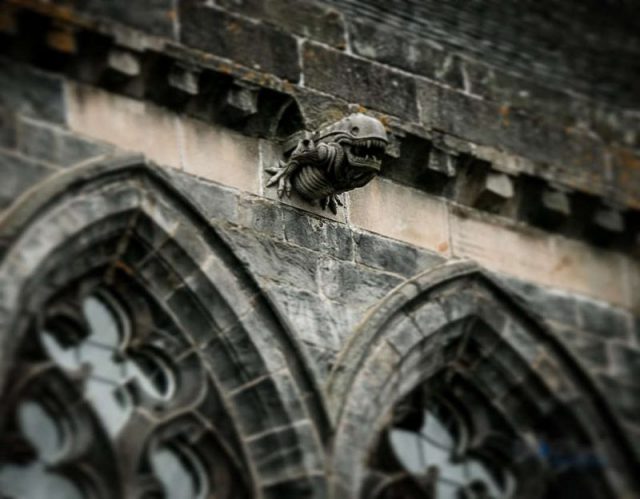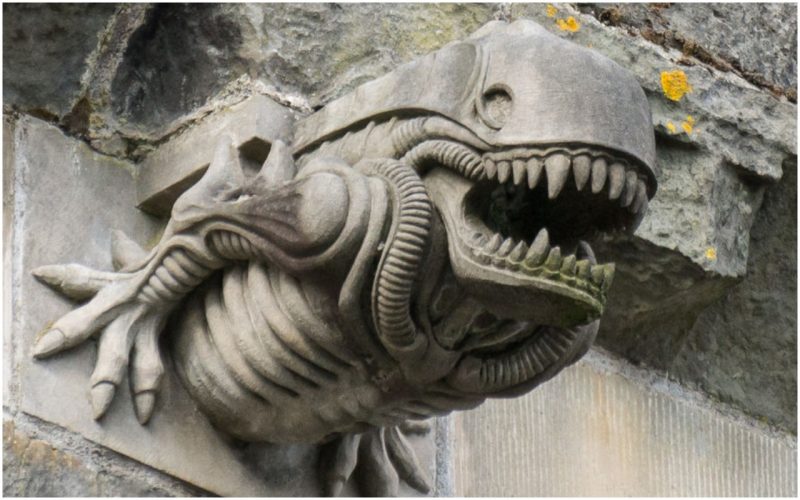Gargoyles have decorated churches and cathedrals, mainly in the Gothic period, with their own kind of flare, reminding believers in the horrors of hell what potentially awaits them if they spend their lives in sin. Gargoyles’ very appearance warded off evil spirits and protected the houses of God, together with everyone who walked into them.
On the other hand, gargoyles fulfilled a very practical purpose. They conveyed water during heavy rain, thus protecting the roof of the structure from damage. We owe a great deal to these demonic stone creatures, as they were an important factor in preserving the centuries-old cathedrals from decay.
But what happens when you notice a gargoyle on a Scottish abbey dating from the 12th century strangely resembling the monster from outer space from Ridley Scott’ space horror masterpiece Alien?
At first, you’d think that it must be a coincidence of some sort, or that it is the original blueprint from which the Swiss artist H. R. Giger drew his inspiration. Such speculations arose when this time discrepancy was first noted by the media in 2013.
The church on which the stone creature stands is the Paisley Abbey in Scotland, first built in the form of a monastery in 1163. In 1245, it received the abbey status, further expanding both its jurisdiction and its size. It is a place of great historical importance, as it once served as an ad-hoc hospital in which Robert II, the 14th-century king of Scotland, was born.

It was where William Wallace, the famous fighter for Scottish independence, received a part of his education and spent his childhood years. Also, the abbey serves as a burial place for all six High Stewards of Scotland. Many other historical events are intertwined with this particular monastery, but the before-mentioned Alien-shaped gargoyle seems like he’s hailing from the distant future.
At first, a photograph depicting Paisley Abbey Alien went viral on Twitter and Facebook, which soon led to media attention. An investigation was inbound. Amidst the growing hype, the BBC interviewed the minister of Paisley Abbey, Reverend Alan Birss, who put a stop to all the fan theories which were getting out of hand.
It turned out that the Paisley Abbey gargoyles went through refurbishment in the early 1990s, after which the famous xenomorph appeared. Only one out of 13 gargoyles remained in its original form, while the other 12 were built from scratch.

It appears that the stonemason who worked on this particular piece decided to have a bit of fun by re-imagining the demons of the old as the sci-fi icon created by Giger in the 1970s. Reverend Birss added his own opinion of how this happened: “Perhaps the film was fairly new when they were carving this and if he was thinking of an alien. Perhaps the alien from the film was his idea of an alien. I’m sure he wasn’t deliberately copying the alien in the film. It was just a concept of an alien.”
Whether or not the unknown artist was aware of this hoax, it remains unclear. The image of the Paisley Abbey Alien appeared on the internet back in 1997, but it failed to attract such attention and the whole thing remained relatively unknown outside of the small Scottish town of Paisley.

Photo by Paisley Scotland /FLickr CC By 2.0
The recent discovery, however, launched a surge of interest, attracting tourists and journalists alike to see for themselves Warrant Officer Ripley’s archenemy carved in stone.
This just goes to show how much of an impact Scott’s SF masterpiece had and the franchise that followed made on people, as it appears possible to replace the Christian depiction of evil spirits and demons who dwell in hell beneath the ground with an extraterrestrial from outer space, lurking in the ventilation shafts of the spacecraft Nostromo.
As for Paisley Abbey, they have added this trait to the long list of reasons to visit this beautiful piece of history in southern Scotland.
